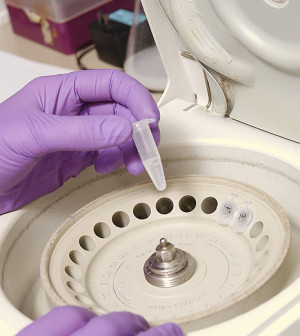- Navigating Your Midlife Crisis: Embracing New Possibilities
- City Raccoons Showing Signs of Domestication
- Mapping the Exposome: Science Broadens Focus to Environmental Disease Triggers
- One Week Less on Social Media Linked to Better Mental Health
- Your Brain Changes in Stages as You Age, Study Finds
- Some Suicide Victims Show No Typical Warning Signs, Study Finds
- ByHeart Formula Faces Lawsuits After Babies Sickened With Botulism
- Switch to Vegan Diet Could Cut Your Greenhouse Gas Emissions in Half
- Regular Bedtime Does Wonders for Blood Pressure
- Dining Alone Could Mean Worse Nutrition for Seniors
Salamanders May Hold Clues to Human Scar Healing


Insights gleaned from salamanders may help keep people scar-free after surgery, University of Florida researchers say.
They’re focusing on a type of salamander called the axolotl, which can regenerate lost limbs and re-grow its own spinal cord.
“When axolotls are young and still living together in nature, it seems like their favorite snack is their siblings’ appendages. They just nibble them off and they grow right back. They don’t even know they were missing,” Ed Scott, a professor in the department of molecular genetics and microbiology at the University of Florida’s College of Medicine, said in a university news release.
Scott and his team have developed a method to study how the regenerative properties in the axolotl’s blood work. The researchers created green axolotls with fluorescent red blood and red axolotls with green blood. This will enable them to track the contrasting blood color to the site of regeneration, and extract blood cells from the site to identify proteins involved in healing.
“In human beings, they can do in-utero surgeries on growing babies and the babies are born without scars. When kids are very, very young, they can cut their finger back to the first knuckle and it will grow back. But by the time you’re an adult, if you get down to the nail bed, that’s where regeneration stops,” Scott said.
While axolotls and people have similar blood cells, those in the salamanders behave differently.
“Maybe the axolotls are expressing different genes in healing in a different pattern, and that might make all the difference between scarring and regeneration,” Scott said.
Axolotls also have natural resistance against cancer and other diseases, so the researchers also plan to investigate what gives the salamanders that protection.
More information
The U.S. National Library of Medicine has more about scars.
Source: HealthDay
Copyright © 2025 HealthDay. All rights reserved.










